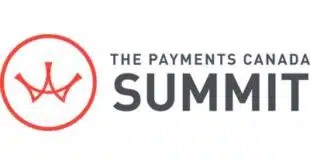You may have only recently started to hear about payments orchestration. You’re going to hear a lot more about it as payment methods and routing choices multiply.
Everybody in the business has heard for years how complicated payments are. In the old days, merchants were local, and all they accepted was coins and greenbacks. Now, because of online commerce, even mid-size sellers can operate worldwide, deal in multiple currencies, and accept a wide-ranging array of local payment methods.
And that’s before you add in the multiple gateways, processors, payment service providers, and routing choices that can confront and confound online merchants doing business these days. It’s enough to befuddle even experienced merchandisers.
Smart merchants can keep track of all that, though, right? Sure, maybe with the right technical help. Just bring on more of that as sales climb and customers are added around the world. But, wait a minute, hiring that help isn’t so easy these days, is it?
“It’s gotten more difficult to find really good payments engineers, cloud engineers. It’s like finding a flying pink pig,” notes John Lunn, founder and chief executive of Gr4vy Inc., a San Mateo, Calif.-based company whose technology helps merchants untangle these payments complexities.
And complexities they are. The beauty of e-commerce is that it lets even middling merchants sell to anyone anywhere at virtually any time. But selling into multiple continents was already challenging a few years ago. It took on dizzying proportions when Covid hit and everyone everywhere, it seemed, went online.
Now, sellers are confronted with enormous increases in demand from jurisdictions where parsing currency conversions, local payment methods, alternative payment methods, routing choices, and payment processors got to be a very bad headache very fast. “With Covid, everybody decided they had to go online—that accelerated everything,” recalls Lunn, who worked at PayPal and CyberSouree before founding Gr4vy in 2020.
‘Where the Magic Happens’
Not only do these complexities have to be untangled fast, the solution has to be efficient and cost-effective for the merchant while satisfying the customer’s expectations for quick transactions and delivery tomorrow.
“Merchants are struggling with the rise of [card-not-present commerce]—the pandemic made it worse,” says Rene Pelegero, a former Amazon.com executive and principal and founder of Retail Payments Global Consulting.
So what’s the answer for overwhelmed sellers? Pelegero and others point to a concept called payments orchestration. Just as a conductor evokes sweet notes from a collection of players who could just as easily be producing a cacophony, this technology uses application programming interfaces to select just the most efficient providers and payments routes to handle the customer’s payment choice at just the moment of the transaction.
The technology is very recent, but already the payments industry seems to be settling on the proper vocabulary for it. The programming is widely referred to as a “payments-orchestration layer” that lies between the merchant and his processor.
“That’s where the magic happens,” says Rodney Bain, president for North America at Apexx Global, a London-based company that competes with Gr4vy and a handful of other firms that specialize in providing this layer for online merchants.
The idea is to orchestrate all the elements of a transaction—acceptance of the customer’s payment choice, just the right gateway, and the right processor—to satisfy the customer. That avoids cart abandonment and keeps the merchant’s transaction price at the lowest level that can still meet all the various networking costs.
Transaction cost, as always, is critical, but it helps if you’re processing enormous volumes. “Walmart will have a team focused on nothing but payments orchestration. Shaving even an eighth of a cent off at Walmart is going to have a big impact,” says Rob Gatto, chief revenue officer at Paysafe Ltd., which works with Spreedly Inc., a Durham, N.C.-based orchestrator, but also does some orchestration of its own.
‘Super High Value’
But it’s about more than minimizing cost while maximizing the ability to accept the customer’s chosen payment method, no matter how obscure. It also seeks to “ensure regulatory compliance, enhance fraud prevention, and enable global payments coverage,” according to a one-paragraph definition supplied by sources reached for this article.
This doesn’t mean the cheapest transaction, either. It just means the most efficient channel that still enables conversion of the maximum possible payment methods, no matter how obscure. For example, Apexx, which caters largely to airlines, connects to more than 150 acquiring banks while managing more than 120 payment methods across hundreds of payment platforms, says Bain.
“You’ve got a ton of [alternative payment methods] outside the United States. Payments orchestration is not always needed, but it’s super high-value in many cases,” says Todd Ablowitz, co-chief executive and cofounder of Infinicept, a payments-technology company. This is because, he says, “The more payments mature and the more flows get expanded, the more complicated the steps can get in the background.”
It’s hard to say with any precision when payments orchestration became a thing to be reckoned with—or even who came up with the name. Many credit Pelegero, who authored a detailed paper on the subject in 2019—just ahead of the pandemic that multiplied online transactions and made the concept so critical—and followed up with a sequel last year.
Widespread awareness, he says, “began as early as 2020. People were adopting the name ‘payments orchestration’ because merchants said that’s what they’re looking for.” Not by coincidence, the dollar volume of e-commerce transactions that year, in the U.S. market alone, shot up 43% to $817 billion, according to the Census Bureau (chart, page 26).
Confronted suddenly with a flood of volume, merchants struggled with establishing connections to multiple acquirers outside their usual scope, Pelegero adds, as acquirers were tied contractually to single processors that in turn were scrambling to forge more links.
As more and more specialists saw the opportunity and entered the market, the roster of providers of orchestration layers grew steadily and now stands somewhere between 20 and 30, Pelegero estimates. This is how many “vendors around the world … claim to have some level of orchestration—smart routing, multiple networks, cascading,” and so on, he says.
“Cascading” refers to the practice of pinging one processor for a price, then another, then another, until the least cost is found that can meet a merchant’s need.
‘It Was Getting More Complex’
But another factor was at work, as well, besides the urgent need to process transactions flooding in from all over the world. The underlying technology had to be ready. “The reason payments orchestration is so recent is that API technology wasn’t fully embraced until three or four years ago,” notes Thad Peterson, a strategic advisor in payments at Aite-Novarica, a consultancy.
An API, or application programming interface, is critical software that manages communication between linked systems. “You can have a single API running orchestration [with] fraud control and foreign exchange,” not just payment methods, Peterson adds. “It was getting more complex in 2020, 2021.”
Added complexity only made APIs more essential. “Everything is API now. API is the channel,” says Cliff Gray, a senior associate at The Strawhecker Group, a payments consultancy, and a former executive with Chase Merchant Services and First Data Corp. “It’s far easier to orchestrate when everyone’s on the same page.”
But as is always the case with transaction processing, cost is critical. Because efficiency is one of the attributes these layers seek out, they can shave off some of the overall cost merchants must pay for processing. But that service, in turn, comes with a price of its own. Estimates, as anyone might expect, vary, and many providers contacted by Digital Transactions demurred when asked about their costs.
A not uncommon pricing scale is anywhere from 2 cents to a dime per transaction, depending on volume, Pelegero has found. That can add up fast. Spreedly charges a platform fee, plus a usage fee linked to volume. For a small merchant, this can come to anywhere from $20,000 to $25,000 per year, while a mid-size seller or larger might pay $100,000 to $500,000, according to chief executive Justin Benson.
But it could be getting harder for payments orchestrators to maintain pricing schedules as more providers—including payments processors themselves, like Paysafe—bust into the market. And some processors are getting more nuanced about what they offer and how they work with orchestrators.
“We prefer the merchant connect directly to us,” says Trevor Nies, senior vice president and global head of digital at Adyen NV, which Nies says works with Spreedly and “several other” companies. “Certain services are hard to make work through payments orchestration, [such as] real-time account updates.”
The thrusts by processors don’t surprise some observers, who see these moves as a response to a natural fear that orchestration could ease them out of the concert hall. “Payments orchestration is about removing the processor from the technology and making it agnostic,” says Greg Cohen, chief executive of Fortis Payment Systems LLC, a Novi, Mich.-based independent sales organization.
And while per-transaction pricing is common, not all orchestrators are following that tune. “We said let’s not do transaction-based pricing,” says Gr4vy’s Lunn. “We’re leasing you infrastructure, we boot you up that infrastructure, so it’s a usage model. This costs you less than half an engineer per year.”
‘It Took a Long Time’
In any case, some practitioners of the orchestration arts aren’t in fear of pricing pressure from new entrants, including fintechs gone astray. The key, says Benson, is to prepare for the inevitable shakeout.
“We feel we’re in a very good place. I feel very good about the strength of our business,” says Benson. “But we’re in a time where fintechs are being aggressively funded, way too many [orchestration] firms are being funded and chasing too few merchants. We have 10 competitors—we won’t have 10 twelve months from now, maybe 24 months.”
Traditional processors, on the other hand, could present opportunity. Orchestration as a third-party deliverable remains a relatively new concept, but processors and orchestrators are learning to work together, even if tentatively.
“It took a long time. Acquirers initially were reluctant to work with us, afraid we’d take volume away from them,” says Apexx’s Bain. “It’s a mutual relationship we’ve built up. Now acquirers are saying, ‘We can’t to this [request for proposal] without you.’”
At bottom, Pelegero reminds the industry, payments orchestration is about moving transactions along the most efficient route. And that need may not always demand the most sophisticated technology. “The least-cost path is what payments orchestration is all about,” he says. “Anyone who has a gateway has some limited payments orchestration.”




